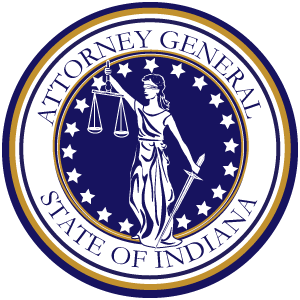Indiana has been hit hard by the opioid epidemic. The rates of opioid prescribing in Indiana reached a peak in 2012 when, on average, there were 112 opioid prescriptions for every 100 residents in the state. From 2012 through 2016, there were 58 Indiana counties with opioid prescribing rates greater than 100 prescriptions per 100 residents. The Attorney General's office is leading the fight to hold the manufacturers and distributors accountable. To date, the Attorney General's Office has secured more than $925 million for Hoosiers in opioid settlements alone, and will continue fighting to hold the manufacturers and distributors accountable.
- $26 billion national settlement with Johnson & Johnson, AmerisourceBergen, Cardinal Health and McKesson. Indiana’s share of the settlement is approximately $508 million and all cities, towns, and counties in the state are participating in the settlement.
- $3.1 billion national settlement with Walmart to resolve allegations that the company contributed to the opioid addiction crisis. Indiana's estimated share is $59.4 million.
- $219 million agreement for Indiana with CVS and Walgreens to settle allegations against the two pharmacies that they contributed to the opioid crisis through their conduct in the distribution and dispensing of prescription drugs.
- $5.27 billion agreements with Allergan and Teva to settle allegations that the manufacturers contributed to the opioid crisis. Indiana’s estimated share is $128 million.
- $350 million national settlement with Publicis, a marketing company, to resolve allegations that the company’s marketing strategies for companies like Purdue Pharma contributed to the opioid crisis. Indiana’s share of the settlement is approximately $7.6 million.
- Indiana is also part of a bankruptcy settlement with Mallinckrodt, a drug manufacturer. The bankruptcy court requires that all the Mallinckrodt funds be used for abatement or restricted spending.
The settlements are governed by Indiana Code §§ 4-6-15. Under the terms of the statute governing distribution (IC 4-6-15-4), those cities and towns receiving less than $5,000 annually in abatement funding will have their distribution sent to the county. Subdivisions that hired their own attorneys and litigated on their own will also have their attorney fees deducted from their settlement payment, which will decrease the amount they will receive. For purposes of accounting for your settlement payments, please refer to the guidelines that were distributed in 2022 by the State Board of Accounts (SBOA). https://www.in.gov/sboa/files/September_-Volume-432.pdf
For information about reporting requirements on the use of restricted funds for abatement purposes and the use of the state’s 50% share of the proceeds, please contact the Family and Social Services Administration (FSSA) or visit https://www.in.gov/recovery/settlement/
For Distribution Estimates for Subdivisions:
For Approved Opioid Abatement Uses:
Estimates for 2023 and future years include projected payments for additional settlements with Walgreens, CVS, Teva, Allergan, and Walmart. The 2023 distributions for those settlements are expected later this year.
Click here to view the Distributors Settlement Agreement.
Click here to view the Opioid briefing for the commission
Click here to view the Johnson & Johnson Settlement Agreements
Click here to view the CVS Settlement Agreement
Click here to view the Allergan Settlement Agreement
Click here to view the Walgreens Multistate Settlement Agreement
Click here to view the Teva Global Settlement Agreement
Click here to view the Walmart Settlement Agreement
Click here to view the Publicis Health Settlement Agreement
.
